2025 Robot Conference Ignites 'Hundred Regiments War': Navigating Price Competition and Technological Breakthroughs
![]() 08/12 2025
08/12 2025
![]() 644
644
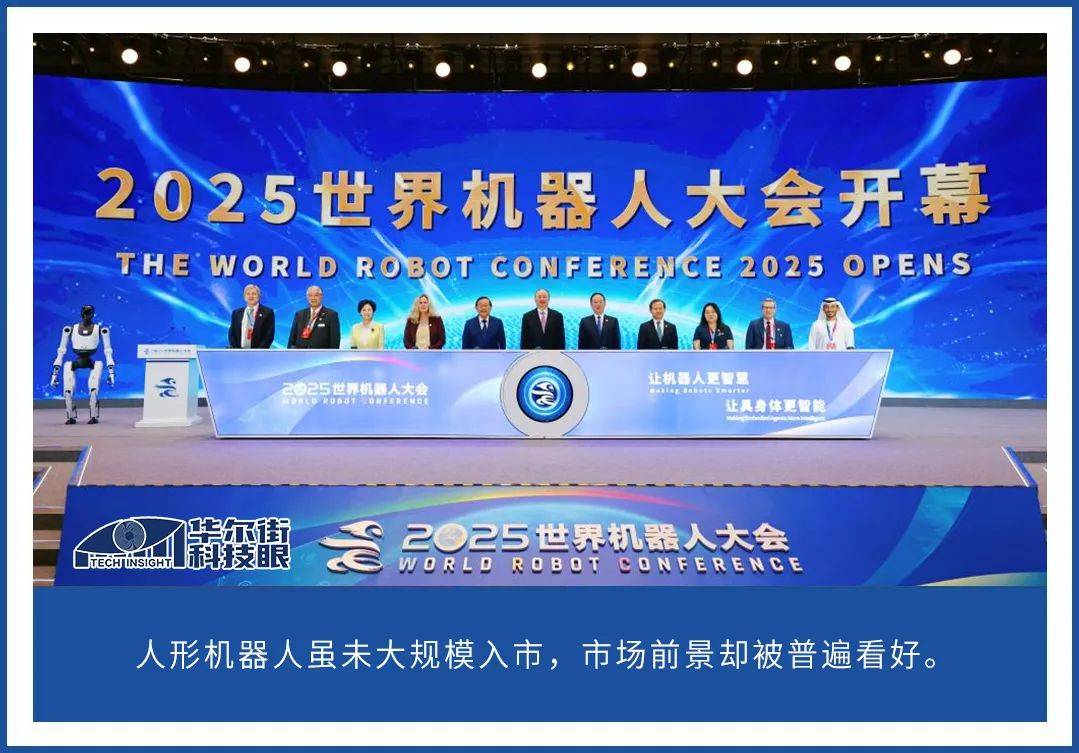
By Leon
Edited by cc Sun Congying
2025 has been heralded as the 'First Year of Embodied Intelligence,' with Chinese enterprises undeniably at the forefront.
From August 8th to 12th, the 2025 World Robot Conference (WRC) took place at the Beijing Yizhuang Beiren Yichuang International Convention and Exhibition Center. Despite the drizzly weather, the enthusiasm of attendees remained undeterred, with long queues forming at the exhibition hall entrance, signifying its immense popularity.
The exhibition drew over 220 robot companies, showcasing more than 1,500 products. Notably, over 50 companies exhibited complete humanoid robots, including industry leaders like Unitree Robotics, Zhiyuan Robotics, and UBTECH.
Unlike past internet business wars, the robot industry, particularly the humanoid segment, is still in a nascent conceptual stage, with products yet to enter the market on a large scale. However, the market's future prospects appear promising.
In this context, companies primarily follow the 'financing-listing-refinancing' model to survive and compete for the future. Wall Street Tech Eye visited the event and interviewed multiple robot companies, observing numerous preliminary cooperation intentions with VC institutions.
On the product front, consumer-grade robots sought differentiated scenario applications, while leading companies initiated price wars to boost installations.
Technologically, long-sequence tasks and AI large model-driven approaches emerged as key areas, with some companies already demonstrating practical results. Various signs indicate that the 'Hundred Regiments War' in the robot industry is imminent.
Humanoid Robots Expand Scenarios and Promote Implementation
At the conference opening ceremony, the Chinese Institute of Electronics, the organizer, released the 'Top Ten Potential Application Scenarios for Humanoid Robots in 2025.' These scenarios include industrial general operations, automobile manufacturing, 3C manufacturing, shipbuilding, petrochemicals, electric power production, safety and emergency response, commercial services, household services, and agricultural production, providing a clear path for humanoid robot technological breakthroughs and industrialization. Consequently, current humanoid robots can be categorized into consumer-grade and industrial-grade.
Among consumer-grade robot companies, Unitree Robotics garnered significant attention. The exhibition featured a Unitree Robotics arena where two G1 robots engaged in boxing, attracting a large crowd. A few months ago, Unitree Robotics founder Wang Xingxing announced their boxing robot training, with promising results. The knocked-down G1 can now swiftly rise and has improved step stability.
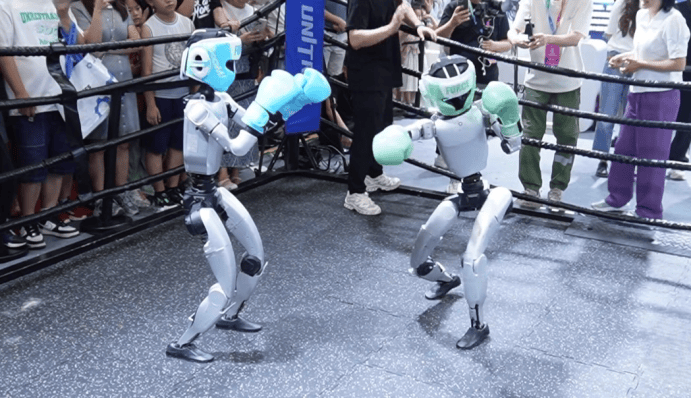
Sungyan Robotics, whose N2 humanoid robot participated in the Beijing Humanoid Robot Marathon and secured second and third places, achieved notable advancements in robot flexibility and stability. As of June, its order volume exceeded 2,000 units, and it completed three rounds of financing this year.
At the event, Sungyan Robotics not only showcased humanoid robots but also presented the interactive bionic human head Hobbs, featuring a more fashionable and varied design with more vivid expressions compared to the April launch version. The trend towards consumer-grade robots becoming figurines and anthropomorphic is significant, focusing on AI dialogue and emotional companionship, potentially becoming a vertical category for mass consumers. (For details, see: Sungyan Robotics Explodes in Sales, Founder Jiang Zheyuan: Commercialization is the Only Way to Survive)
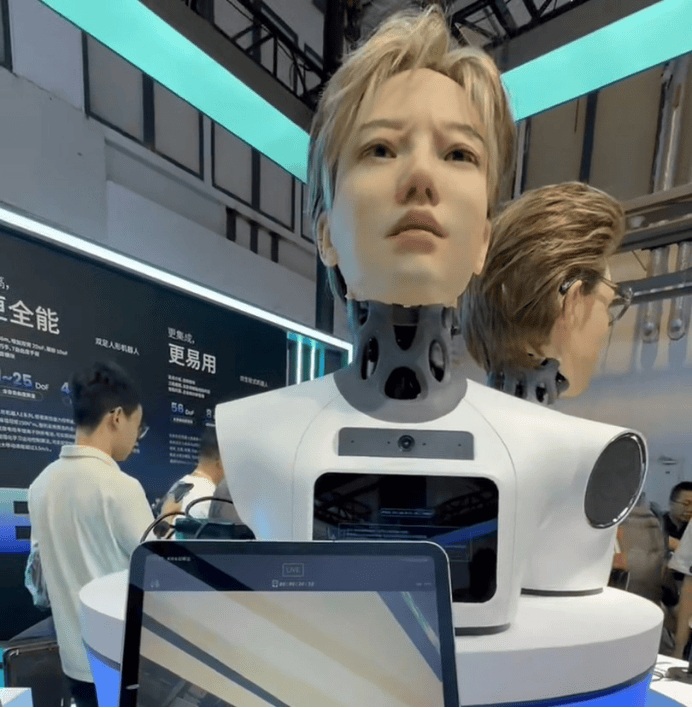
Sungyan Robotics' interactive bionic human head Hobbs
Additionally, we saw robot products like Fourier GR-3, emphasizing real touch and healthcare companionship, potentially appearing in hospitals, nursing homes, and other scenarios to assist humans in guiding, accompanying, and other tasks. Another highlight of the Fourier booth was the newly upgraded 'Embodied Intelligence Rehabilitation Port,' demonstrating the company's profound transition from digitization, standardization, and personalization to embodied intelligence in rehabilitation medicine.
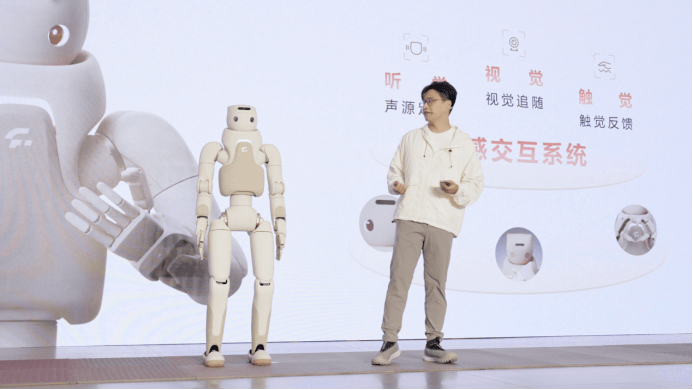
Fourier GR-3 launch event scene
The 'Embodied Intelligence Rehabilitation Port' leverages the GRx series of humanoid robots, integrating multimodal perception, large models, and precise motion control technology. It constructs five major training interaction modules for healthcare scenarios, including guidance consultation, cognitive rehabilitation training, upper limb rehabilitation training, motor function reconstruction, and remote rehabilitation, providing integrated services for rehabilitation training, auxiliary care, and emotional companionship. Its aim is to create a more caring, intelligent, and humanized rehabilitation service experience.
In contrast, industrial-grade robots do not prioritize complete anthropomorphism in their design, focusing instead on 'being able to work.' Some robots can operate autonomously in specific environments without remote control.
Sianon Robotics, specializing in industrial robots, set up an industrial conveyor belt at their booth, where their embodied intelligent wheeled humanoid robot was 'working.' This robot does not adopt a complete humanoid design, utilizing wheeled legs and gripper hands for flexible movement and heavy load handling, which is a current solution for robots entering factories.
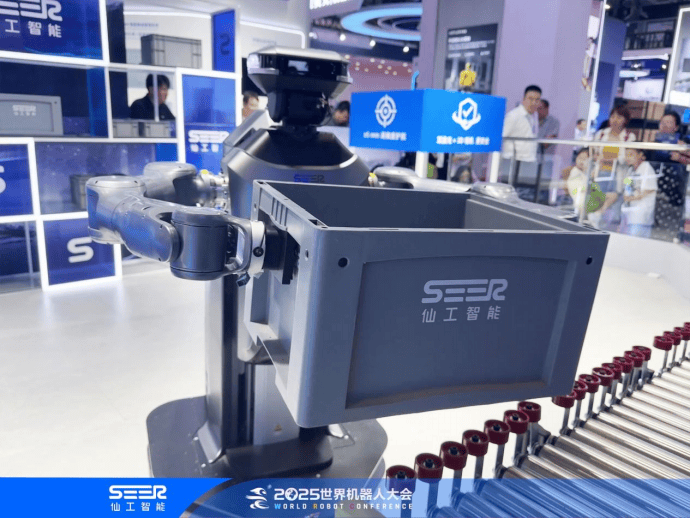
We also witnessed Yuanluo Technology's Monte02 wheeled robot, a scientific research product. It features precise hand manipulation and certain AI capabilities. Monte02 is equipped with a dexterous hand capable of operating pipettes, grasping reagents, and other precise force operations, supporting natural language and teaching input, making it suitable for drug development, inspection, and screening fields.
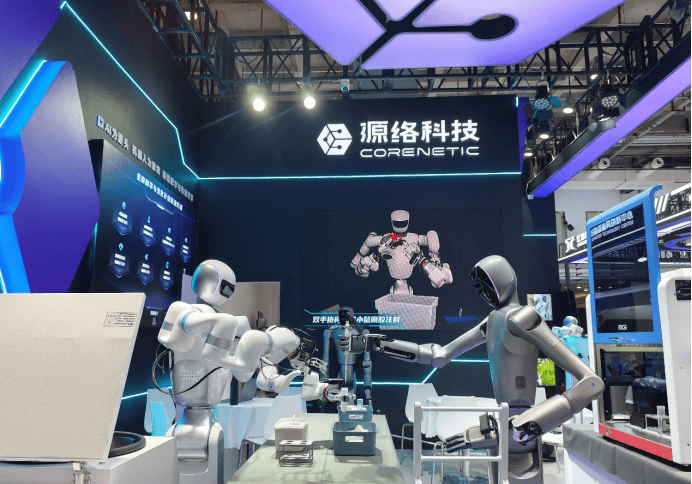
Compared to last year, this year's robot conference saw a significant increase in practical applications, undoubtedly benefiting from the combined efforts of upstream, midstream, and downstream industries, including the decline in torque motor costs and the improvement of dexterous hand performance. However, according to Wall Street Tech Eye's observations, the humanoid robots at the exhibition still rely on remote control or pre-programming rather than real-time AI driving. Robots still need smarter brains.
Breakthrough in 'AI-ization' of Robot Brains is Urgently Needed
Tesla's robot stands as a representative of AI-driven humanoid robots due to substantial investments and massive training data: numerous Tesla car owners provide data for pure vision solutions, which train the Grok large model, supported by the world's largest computing power center costing billions of dollars, thereby achieving a closed loop.
Currently, Chinese robot companies' investments in AI large models have not reached Tesla's scale. Unitree Robotics founder Wang Xingxing stated in an interview that Unitree maintains a cautious attitude towards model development, and its investment cannot be compared to AI companies and internet giants.
Zhiyuan Robotics is relatively more active in this field, having developed and open-sourced the first 'Universal Embodied Base Large Model' Qiyuan Large Model, attracting global developers to join, thereby enabling continuous data collection, analysis, and optimization. At Zhiyuan Robotics' booth, robots served as sorters in front of conveyor belts, autonomously performing scanning and sorting operations. However, the parcels were primarily small items, with no large boxes. On the other side of the booth, Zhiyuan Robotics handed out cola to visitors, similar to Tesla's Optimus Gen-2 robot serving popcorn in restaurants, but the movements were not as smooth as Tesla's robot.
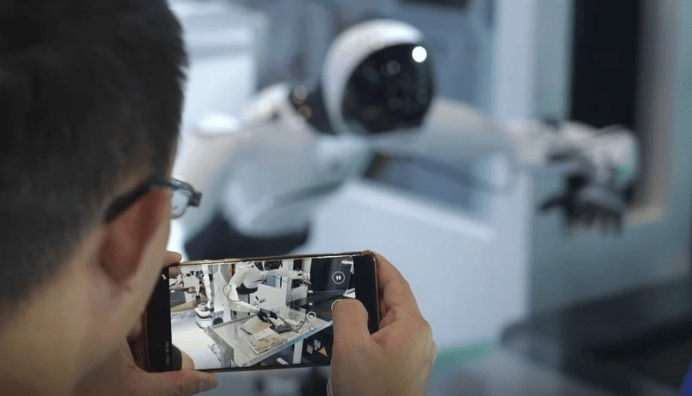
Furthermore, some companies at the exhibition showcased their model development achievements in vertical fields. For instance, Qianxun Intelligence demonstrated its robot folding clothes at JD.com's booth, relying on its self-developed VLA (Vision-Language-Action) end-to-end model to achieve complex operations, showcasing a certain ability to perform long-sequence tasks.
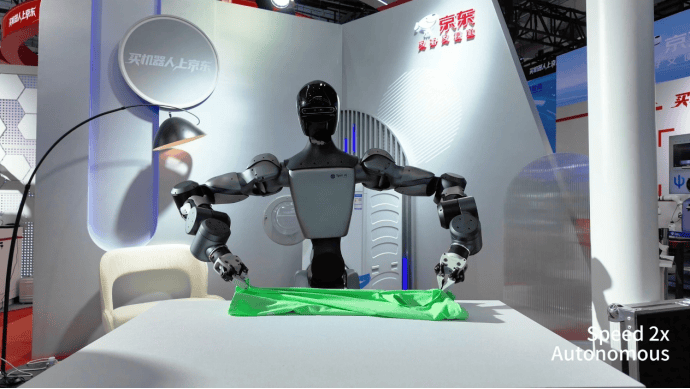
UniX AI, specializing in household service robots, developed the tactile modality large model UniTouch, aiming to achieve high-sensitivity tactile perception in response to the limitations of vision and force sensors, marking an attempt in the vertical field. Founder Yang Fengyu believes that household robots will gradually enter more homes within 3 to 5 years, demonstrating value in specific task scenarios such as cleaning and laundry. The current focus is on reducing costs through mass production and continuously optimizing the user experience.
Another interesting product comes from OmAI United Technology. The company showcased a plug-and-play AI module equipped with lidar, depth cameras, and edge computing power, installable on any robot supporting the ROS development environment (like Unitree G1), enabling AI training and autonomous operation. Through an app, robots can be customized for training, all based on the VLM large model.
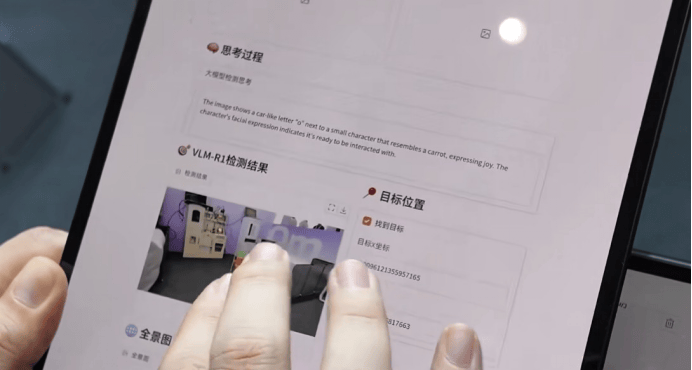
Essentially, the industry and market's expectations for robots hinge on their ability to autonomously execute tasks rather than relying on remote control or pre-programming, which is crucial for determining whether robots can truly integrate into human society. Of course, this does not diminish the value of performance robots; at this stage, they undertake tasks such as motion tuning, data collection, and popularizing concepts to the public.
This leads to a collision of viewpoints: should robot companies prioritize increasing installations to drive ecological development, or should they first explore application forms and then push products to the market after maturity?
Will Future Robots Be Free? Price Wars First
At the robot conference, founders and company leaders appeared for interviews or speeches, predicting industry development and expressing viewpoints and ideas.
Unitree Robotics' Wang Xingxing revealed in an interview that Unitree Robotics is currently lowering prices (specifically for its newly launched Unitree R1, priced from 39,900 yuan) to attract more customers and form a significant installation base. Only with increased installations can an ecosystem be built.
Wang Xingxing believes that the focus of robot technology development in the next five years includes three points: a unified end-to-end large model, lower-cost and longer-lasting hardware, and low-cost, large-scale computing power. Achieving these breakthroughs requires the collective efforts of the entire industry chain.
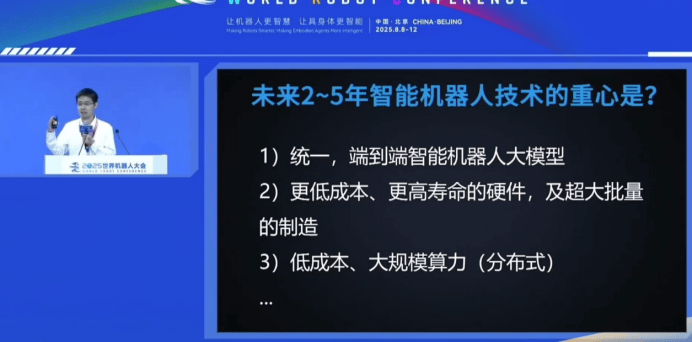
He also mentioned a concept: in the future, robots may be free. He illustrated this with an example: in a barren land, robots cultivate it, and a portion of the output is turned over to the state as tax. Of course, a significant premise is that robots can truly work.
Industrial-grade robot companies hold differing viewpoints, tending to prioritize application before improvement. Wei Chang, Vice President and Chief Technology Officer of Midea Group, stated in his speech, "Our strategy is to integrate humanoid robots into our industrial manufacturing scenarios and conduct internal applications first. After understanding and identifying problems and continuously improving, we hope to achieve large-scale application in specific scenarios in the near future, such as providing interactive services to customers in stores and robotizing household appliances."
As for free robots fully integrating into human society, discussions at this stage are premature. Many science fiction novels, movies, and games have already touched on such themes, such as 'Detroit: Become Human' and 'Westworld.' These literary works share a common virtual world view where technology is highly developed, robots are completely anthropomorphic, and AI has overcome the thinking bottleneck. However, most current humanoid robots struggle even with basic tasks like standing steadily and climbing stairs, and it may be difficult for them to reach the level of 'Westworld' within a decade.
After the Capital Frenzy, Will It Be Industrial Rise or 'A Mess'?
Behind the robot feast lies the capital market's driving force. Among the participating companies, one can find internet enterprises such as Alibaba, Tencent, ByteDance, JD.com, Meituan, and Xiaomi; established VC firms like Sequoia Capital, Matrix Partners China, and China Renaissance; and local governments boosting the industry with corresponding guiding funds. As the 'Exclusive Global Strategic Partner' of the conference, JD.com appeared alongside global top robot brands like Unitree Robotics, Zhiyuan, Tiangong, Zhongqing, Xinghaitu, Zhuji Power, Qianxun, and Sungyan Robotics, announcing the 'Intelligent Robot Industry Acceleration Plan,' pledging to invest over 10 billion yuan in the field of intelligent robots. Within three years, it aims to help 100 intelligent robot brands achieve sales of over 1 billion yuan and bring intelligent robots into over 1 million terminal scenarios.
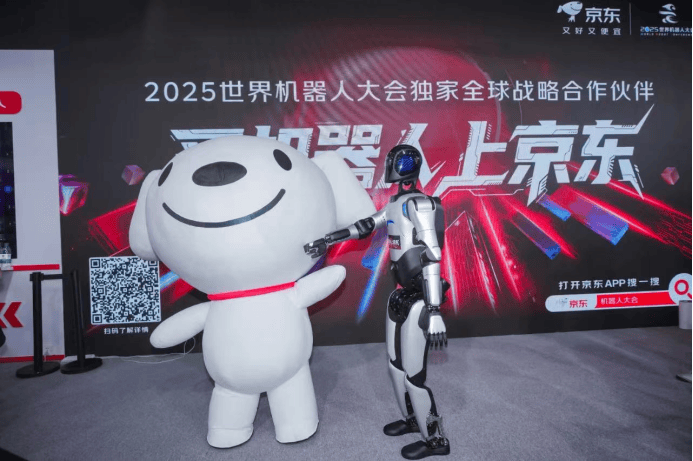
Media reports indicate that as of early August, the humanoid robot sector has witnessed a surge in activity, with 107 financing events recorded this year. These events have amassed a cumulative financing amount of approximately 27.9 billion yuan (excluding undisclosed amounts), heating up the market significantly.
Among the players in this sector, besides UBTECH, which is already listed in Hong Kong, Unitree Robotics and Zhiyuan Robotics stand out as the most favored companies, characterized by continuous capital influx.
Unitree Robotics has initiated its listing process and is anticipated to debut on the A-share STAR Market within the year. The company boasts robust capital strength, attracting investments from tech giants like Tencent, Alibaba, and Meituan, as well as industrial heavyweights such as China Mobile and Geely Automobile. Unitree's current valuation exceeds 12 billion yuan (for more details, see: Wang Xingxing Rushes to Embrace the 'Embodied Intelligence' Dividend, Will Unitree's Industrial Chain Be Able to Taste the First Soup?)
On the other hand, Zhiyuan, despite repeatedly denying IPO plans, recently acquired a 66.99% stake in Shanghai Vinyex Composite Material Co., Ltd., an A-share company, for 2.1 billion yuan, making it the controlling shareholder. This move is perceived as a precursor to a backdoor listing (for more details, see: Former Huawei prodigy creates a bike-riding robot, company valued at 7 billion yuan).
However, amidst the excitement, discordant voices have also emerged. Following GSR Ventures' Zhu Xiaohu's criticism of the humanoid robot industry's unclear application prospects and the withdrawal of investments from several companies, rumors of investor-founder disputes have surfaced at another renowned robotics enterprise, Bolunte Robotics.
According to recent reports, Bolunte Robotics issued a notice of a board resolution that "failed to pass the proposal on a fixed monthly salary of 2 million yuan for the general manager." The investor, Junlan Investment, accused the founder of "emptying the company," drawing industry attention.
With Bolunte Robotics reporting consecutive years of losses totaling 400 million yuan, the founder, chairman, and general manager, Yin Rongzao, not only demanded a fixed monthly salary of 2 million yuan but also submitted a controversial proposal to the board on July 29th of this year: all funds from the company's net profit over the next ten years, minus one yuan, would be allocated as his personal bonus.
Such an outlandish demand naturally encountered strong opposition from investors. Li Bozheng, the representative of Junlan Investment, reportedly denounced this as "emptying the company" and questioned the respect for shareholders.
Drawing parallels from the "Thousand Group Wars" in industries like group buying, shared bicycles, takeout delivery, and new energy vehicles, the capitalization of the robotics market should proceed with rationality and patience. Investors must exercise discernment to avoid pitfalls similar to those faced by Bolunte Robotics.
Currently, the Chinese economy is transitioning towards high-end manufacturing, and the government is actively advocating against internal competition. In this context, as a symbol of high-tech and sophisticated technology, the robotics market must have the courage to burst bubbles and foster a healthy industrial environment. To conclude, this article quotes Wei Chang: "Humanoid robots are indeed hot, but we must strive to calm down, refine our technology, and discover truly valuable applications."








